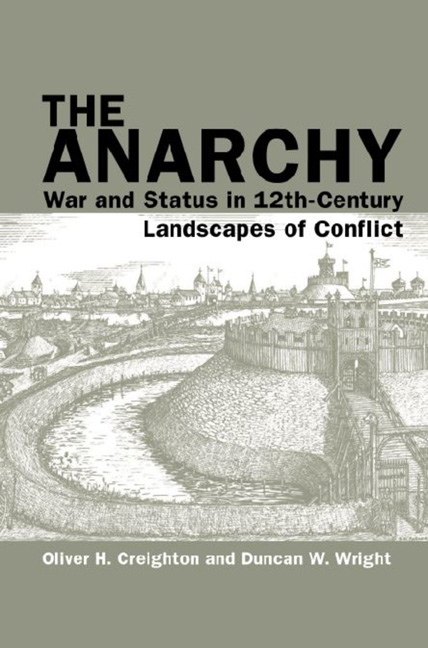Book contents
- Frontmatter
- Contents
- Acknowledgements
- List of Figures
- List of Colour Plates
- Chapter 1 Introduction
- Chapter 2 Historical Outline and the Geography of ‘Anarchy’
- Chapter 3 Waging War: Fields of Conflict and Siege Warfare
- Chapter 4 Architecture and Authority: Castles
- Chapter 5 Material Culture: From Arts to Coins
- Chapter 6 Performing Violence: Arms, Armour and Military Apparel
- Chapter 7 Faith and Fortification: The Church
- Chapter 8 Town, Village and Country
- Chapter 9 Anarchy on the Fen Edge: Case Study of the Isle of Ely
- Chapter 10 The Twelfth-Century Civil War in Context: Assessment and Reassessment
- Appendix Key Sites to Visit
- Bibliography
- Index
- Plate section
Appendix - Key Sites to Visit
- Frontmatter
- Contents
- Acknowledgements
- List of Figures
- List of Colour Plates
- Chapter 1 Introduction
- Chapter 2 Historical Outline and the Geography of ‘Anarchy’
- Chapter 3 Waging War: Fields of Conflict and Siege Warfare
- Chapter 4 Architecture and Authority: Castles
- Chapter 5 Material Culture: From Arts to Coins
- Chapter 6 Performing Violence: Arms, Armour and Military Apparel
- Chapter 7 Faith and Fortification: The Church
- Chapter 8 Town, Village and Country
- Chapter 9 Anarchy on the Fen Edge: Case Study of the Isle of Ely
- Chapter 10 The Twelfth-Century Civil War in Context: Assessment and Reassessment
- Appendix Key Sites to Visit
- Bibliography
- Index
- Plate section
Summary
THIS APPENDIX provides a brief gazetteer of key sites associated with the ‘Anarchy’ that can be visited. Arranged by region, it includes details on site location and accessibility. Given the sheer number of places involved in a civil war that extended over almost 20 years, this is not a comprehensive list, but is intended to indicate to the reader locations where tangible and broadly dateable remains can be seen, as well as conflict landscapes that are accessible.
Southern and South-West England
Danes Castle, Exeter (SX919933) is a small ringwork siege castle almost certainly built by King Stephen against Rougemont Castle, which lies on the opposite side of Longbrook Valley to the south (although the view is blocked by Exeter Prison). The earthworks were landscaped after the site was excavated in the early 1990s and are fully and freely accessible. The best-preserved siege castle of the civil war is, however, the ringwork and bailey known as ‘The Rings’ at Corfe, Dorset (SY956820), located on a publicly accessible site immediately south of the great castle, with spectacular views of the latter. The site has never been excavated but the earthworks are impressive and show evidence of modification as a platform for gunpowder artillery in the English Civil War.
Winchester, Hampshire contains numerous sites of significance from the period; the foremost is Wolvesey Palace (SU484290), in the south-east corner of the city walls, which preserves extensive remains associated with Bishop Henry of Blois. Farnham Castle, Surrey (SU83724732), preserves excellent evidence of Henry of Blois's castle in the form of the excavated remains of a tower sealed within the motte, itself surrounded by a later shell keep. Both sites are managed heritage attractions with entrance fees.
Nothing remains of Malmesbury Castle, Wiltshire, although the abbey which it adjoined displays some of the finest late Romanesque sculpture in Britain (ST933874). Located approximately 1.5km south of Malmesbury (ST94058578), and probably constructed in order to besiege the town and castle, is the ringwork of Cam's Hill. Although on private property, a public footpath passes to the north of the monument, from which there are good views of the earthworks.
- Type
- Chapter
- Information
- The AnarchyWar and Status in 12th-Century Landscapes of Conflict, pp. 290 - 294Publisher: Liverpool University PressPrint publication year: 2017



